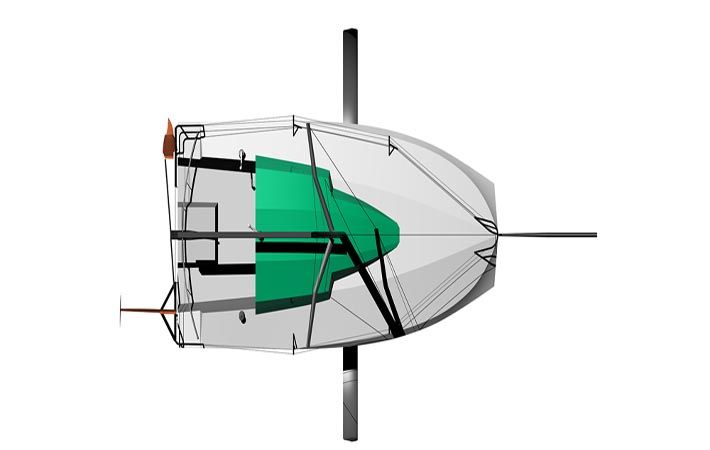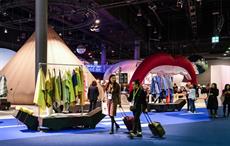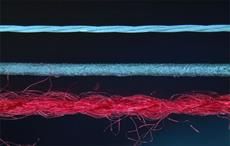GreenPoxy resins from Sicomin, a pioneer in the development of high-performance bio-based epoxies, are being used for producing a uniquely sustainable new Mini 6.5 class yacht, the Floki 6.5. Designed by Antoine Mainfray, Atelier Interface, a leading naval architect and bio-composite specialist, the 6.5m Floki showcases the latest in bio-composite materials.
Mainfray has built structures for the world’s fastest racing yachts in the IMOCA, VOR and ULTIM classes. The 6.5m Floki showcases a cost-effective flat panel build process.GreenPoxy resins from Sicomin, a pioneer in the development of high-performance bio-based epoxies, are being used for producing a uniquely sustainable new Mini 6.5 class yacht, the Floki 6.5. Designed by Antoine Mainfray, Atelier Interface, a leading naval architect and bio-composite specialist, the 6.5m Floki showcases the latest in bio-composite materials.#
Mini 6.5 class yachts were first proposed by UK sailor Bob Salmon in the late 1970’s as a new class of small, simple, and cheap to build, singlehanded racing yachts that would counter the rising costs involved in the sport at the time. Even today, the biennial Mini-Transat 6.5 race, from France to the Caribbean, remains one of the most competitive ocean races and a hot bed for new design innovations and experimental composite constructions.
Mainfray’s initial design concept for the Floki 6.5 was to focus on simplifying both the design and the build process itself, using pre-made infused panels shaped over frames or in a jig rather than an expensive female mould. He was also determined that the Floki 6.5 should be entirely built from bio-based or recyclable raw materials.
Successful processing trials, excellent mechanicals, DNV GL type approval and the support of the Sicomin technical team all came together to make the resin choice an easy one. InfuGreen 810 was selected for the flat table infusion of the hull, deck, roof, and structural panels, whilst GreenPoxy 33 was chosen for secondary lamination of the assembled parts. Both resins can be used with different hardener speeds depending on the component size and curing time required.
Sicomin’s GreenPoxy resin range is fully compatible with a wide range of traditional composite fibres and fabrics as well as more sustainable bio-based reinforcements. For the Floki 6.5, Mainfray worked with bamboo textile specialists Cobratex, selecting their 350gm 2x2 twill weave bamboo fabric for the hull, deck and roof panels. With environmental credentials, the Cobratex material actually has a negative carbon footprint.
The bamboo strips act as tiny sandwich structures that absorb very little resin, enabling high reinforcement ratios in the finished laminate. With a density only half that of carbon fibre and impressive sound and vibration damping qualities, the bamboo reinforcements produce a highly functional, as well as ecological, bio-composite structure.
Maximising the inclusion of sustainable materials onboard, sandwich panel sections of the Floki 6.5 use Airex’s latest T92 PET foam formulation, that is the first to be manufactured from post-consumer recycled PET drinks bottles. The T92 core for the project, which also features Airex’s SealX surface treatment that halves the resin uptake of the core material, was also delivered by Sicomin as part of their range of complimentary products.
Building with a hull jig rather than a traditional plug or mould, allowed the build to start almost straight away. As soon as the jig was in place and the first bamboo fibre and Infugreen 810 panels infused, the next steps in the hull and deck build follow.
The Floki 6.5 build is underway at Mainfray’s workshop near La Rochelle with the launch and sea trials planned for April-May 2021, ready for the start of the Mini 6.5 racing season.
“We have built quite some expertise with naturals fibres and Sicomin’s bio-resins during our previous projects. For the Floki 6.5 it was really important to us to have materials that didn’t compromise in terms of performance and processability, as well as being green. The GreenPoxy range delivers that performance and is so easy to work with,” Mainfray said.
Fibre2Fashion News Desk (SV)


